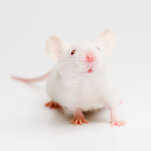
Blood of Young Mice Extends Life in the Old
In the 1950s, Clive McCay of Cornell University and his colleagues used parabiosis to explore aging. They joined young and old rats, stitching together their flanks so that the capillaries in their skin merged. Later, Dr. McCay and his colleagues examined the cartilage in the old rats and concluded it looked younger.
In the early 2000s, parabiosis went through a renaissance. Researchers used 21st century techniques to study what happened when animals of different ages shared the same bloodstream. They found the muscles and brains of old mice were rejuvenated, while younger mice showed signs of accelerated aging.
Some doctors jumped on these preliminary results and started offering injections of blood plasma from young people as a way to treat dementia and other diseases of old age. The Food and Drug Administration issued a warning against such treatments in 2019, cautioning that they “have no proven clinical benefits for the uses for which these clinics are advertising them and are potentially harmful.”
For several years, Dr. White and his colleagues have been tweaking parabiosis procedures in mice to better understand the anti-aging effects. The scientists joined an old and young mouse together for about three months — twice as long as typical parabiosis experiments — before carefully detaching them. After the animals recovered, the scientists observed the animals to see how much longer they lived.
The researchers not only found that the old mice lived longer, but also that the course of their aging appeared to change.

